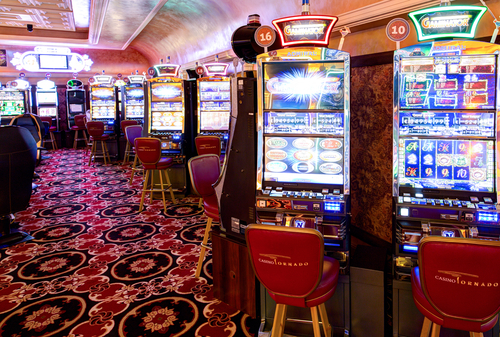Inside Look: How Casino Games Are Made

Beneath these shimmering illuminations and those enticing sounds of rotating wheels lies an dynamic world in which innovation meets mathematics: the making of games of chance. While players flock to casinos seeking excitement plus the possibility of winning big, a vast amount of effort takes place behind the scenes to create these games for their enjoyment. From the starting concept to the ultimate product that players interact with, numerous elements are brought together to ensure a captivating gaming experience.
Designers, technicians, plus game developers work together to merge innovative technology with enthralling gameplay features. Every aspect, from graphics and audio elements to probabilities and payouts, is meticulously crafted to attract players plus keep them entertained. Understanding the intricate process of the way casino games are made reveals not only the technical skills required but also the creative vision that brings these engaging experiences to life.
Video Game Design Workflow
The design workflow begins with brainstorming and concept development, where creators generate concepts for new casino games. This first phase typically involves identifying target audiences and analyzing market trends. Designers take into account elements like game mechanics, themes, and payout structures to create an engaging experience. Teamwork between game designers, mathematicians, and artists is crucial to ensure a balanced concept.
Once a concept is selected, the next stage entails prototyping and testing. Designers build a working version of the game to evaluate its playability and mechanics. This facilitates adjustments and refinements based on feedback from testers. Iteration is key, as designers may go through multiple rounds of testing to fine-tune gameplay balance and user experience. This stage is essential for spotting any potential issues before the game goes into production.
After testing, the game moves into the development phase and production. This comprises the technical aspects of coding the game software, integrating graphics, and making sure compliance with gaming regulations. Quality assurance testing verifies that the game functions seamlessly across different platforms and devices. Once everything is polished, the game is prepared for launch, usually accompanied by marketing strategies to attract players and generate buzz around the new casino offering.
Technology and Development
The development of casino games has changed significantly with advancements in tech. Modern game design often incorporates premium graphics, immersive sound effects, and engaging animations that deliver a captivating experience for players. Game developers use sophisticated software tools and programming languages to build these immersive gaming experiences. Additionally, the use of random number generators ensures equity and unpredictability in outcomes, which is essential for maintaining player trust and compliance with gaming regulations.
In recent years, the growth of online casinos has pushed the limits of game development even further. Developers are now able to create games that appeal to a worldwide audience, integrating features such as live dealers and VR environments. This transition has encouraged new ideas, leading to unique game mechanics and formats that enhance player engagement. Gaming on mobile devices has also become a key focus, driving developers to optimize games for smartphones and tablets, ensuring availability and ease of access for players on the go.
Cooperation among creators, visual artists, and math experts is essential in the creation process. Each team brings their expertise to make sure games are not only visually appealing but also mathematically sound and enjoyable. The integration of player feedback during beta testing allows developers to refine game features and functionalities, ultimately leading to a favorable launch. As technology continues to advance, the potential for innovative game concepts and experiences is limitless, promising an enticing future for casino games.
Evaluating and Quality Control
Once a gambling game has been developed, it enters the critical phase of testing and quality control. This stage ensures that the game operates seamlessly and provides a just experience for gamblers. Teams conduct comprehensive tests, including functionality checks to ensure that all game features work as intended. Each aspect, from graphics to sound effects, is reviewed to ensure quality benchmarks are met.
In addition to functionality testing, the game entails rigorous compliance checks to meet regulatory requirements. Various jurisdictions have specific regulations governing game fairness and player protection. Quality assurance teams will confirm that the random number generators are operating correctly and that the game's payout percentages correspond with market standards. This thorough examination helps establish trust with users and oversight bodies alike.
Finally, user testing may be conducted with actual users to gather feedback on user experience. This crucial insight allows developers to execute necessary adjustments before the public launch. 188betonline.com Addressing any likely issues noted during this phase helps ensure that players will experience a smooth, captivating experience when the game goes live. The commitment to quality reflects the sector's dedication to delivering enjoyable and trustworthy casino games.
